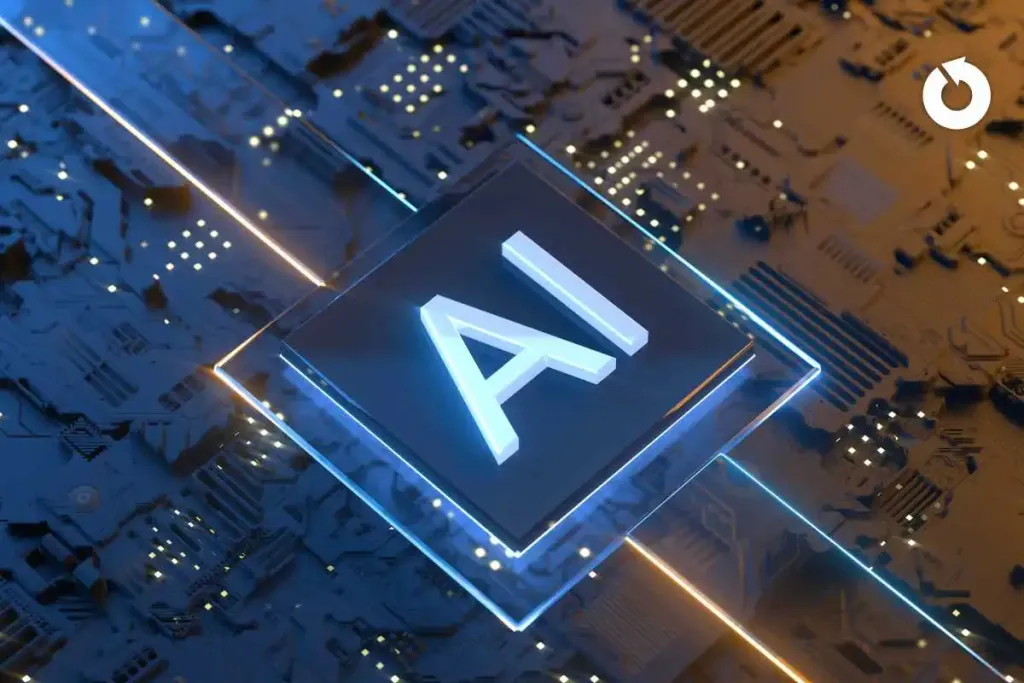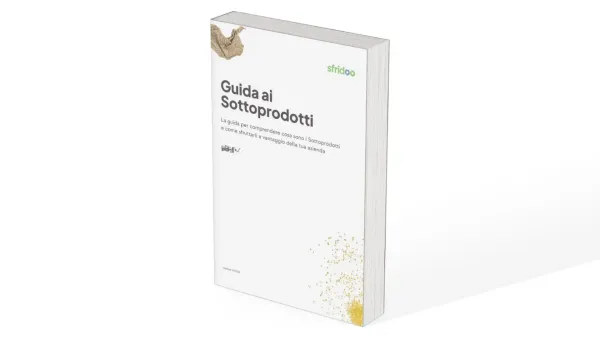Can artificial intelligence accelerate the transition to the circular economy?
Yes, harnessing the full potential of artificial intelligence (AI), can lead to the rapid and successful design and implementation of a variety of Circular Economy solutions.
There are several possibilities for integrating AI within this sector such as designing circular materials, managing sustainable business models, and optimizing product flows.
Before getting into the specifics of this world, it is necessary to understand what an AI is and how it works.
What is Artificial Intelligence?
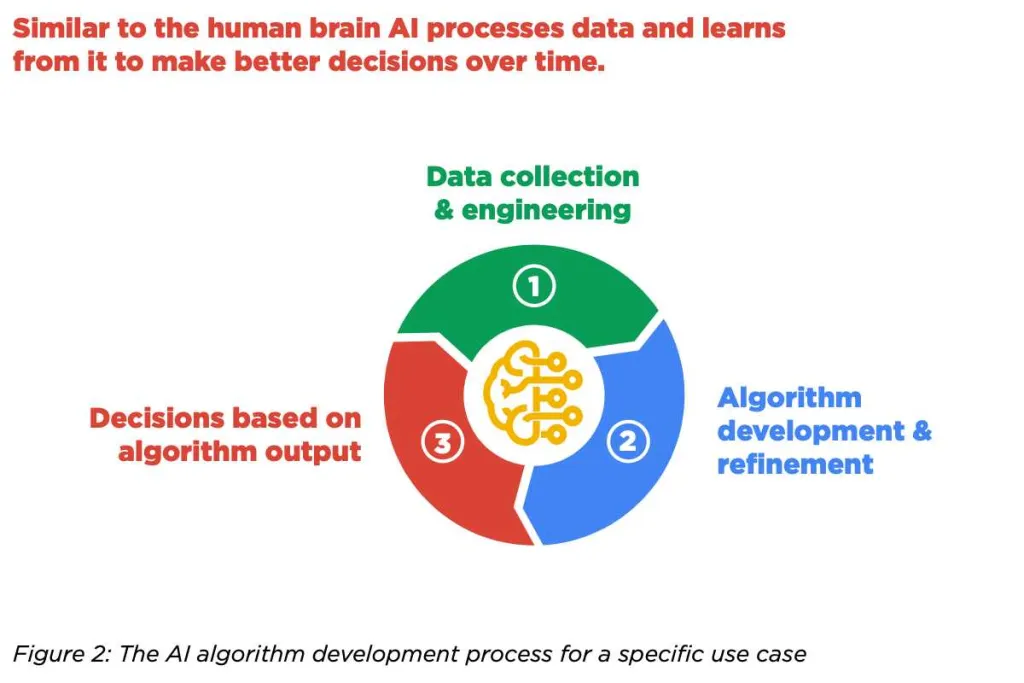
Artificial intelligence (AI), in English “Artificial Intelligence,” is a general term for a collection of technologies, dealing with models and systems that perform human-like cognitive functions, such as reasoning and learning.
The development of an AI algorithm typically follows a process of data collection, through the acquisition of metadata (text, images, sounds), which are constantly labeled and engineered into a machine-readable format, thus developing an algorithm capable of providing an output capable of solving a particular problem.
Operation and infrastructure
Interacting with this new and emerging technology requires experts, who can translate the output of the algorithm into results that make sense to humans, along with the availability of high quality data, sufficient to train the algorithm, as, poorly engineered data leads to poor quality results.
To gain value from AI, organizations must establish digital processes, an open culture around it and, at the technical level, adequate processing power to handle all data inputs.
These elements give AI the ability to draw connections between different parts of a data network and generate solutions beyond human capacity and speed.
How artificial intelligence helps the Circular Economy
According to the report “Artificial intelligence and the circular economy ai as a tool to accelerate the transition” by the Ellen MacArthur Foundation (EMF), in collaboration with Google, the capabilities of artificial intelligence can help build a Circular Economy at a faster pace than would be possible without it, stimulating the development of entirely new circular companies or helping them in their transition.
Other great applications, is that of using AI algorithms to help optimize recycling processes and smart materials management, helping companies in their search for innovative eco solutions.
So the applications are varied, but in this article we are going to focus on three aspects in particular of such integration:
- design circular products, components and materials;
- manage circular business models;
- optimize infrastructure to ensure circular product and material flows.
Designing circular products, components and materials
The Circular Economy requires design innovation to always keep products,
components and materials at their maximum utility and value, distinguishing between technical and biological cycles.
A focus on design can enhance cycles of reuse, repair, refurbishment, and recycling of technical materials, fostering the development of cascading cycles that link different enterprises, including through territorial platforms, so that waste from one, becomes materials for another, or scrap becomes the “second” raw material of the same.
Features such as disassembly, upgradability or reuse, can be handled by AI, through a continuous feedback process in which designers test and refine the generated design suggestions, leading to a better result, in a shorter period of time.
In addition, by forming an algorithm for analyzing known chemical data, AI could be used to predict the toxicity of chemicals or materials more economically and efficiently.
However, much of the material property data is currently inaccessible, limiting its application possibilities.
Practical example of designing materials with AI
One example where AI was used to assist and accelerate materials design was the “Accelerated Metallurgy” project run by the European Space Agency.
AI technology was used to create a rapid and systematic way to produce and test new metal alloys, which exhibit basic principles of the Circular Economy, such as:
- the absence of toxicity;
- design aimed at reuse;
- the use of innovative production methods;
- additive processing that minimizes waste.
Accelerated Metallurgy uses AI algorithms to systematically analyze massive amounts of data on existing materials and their properties, and to design and test new metal alloy formulations, capturing details of chemical, physical, and mechanical properties.
In this way, making use of rapid response loops, the algorithms can map the key trends in structure, process and properties, making the traditional “trial and error” process more time-efficient.
Managing circular business models
Developing successful and profitable circular business models requires organizing business functions such as marketing, pricing and sales, after-sales services, customer service, logistics, and reverse logistics, supported by Circular Economy principles.
It involves introducing new business propositions such as asset sharing and product-as-a-service, and successfully competing existing circular products with linear ones.
Reverse logistics and remanufacturing work requires solving several problems, including the supply and demand for used products and components, from which volatile market pricing results.
Practical example of managing circular business models with AI
Staff Str, a London-based B Corp startup dedicated to reducing and reusing unused material, buys and collects used products from consumers, with a focus on clothing, and sells them on existing secondary markets, raising awareness of the value of unused clothing.
Stuffstr uses AI algorithms, for exchange pricing and refining the sales strategy, through constant experimentation and rapid feedback loops.
AI technology generates circular value within current business models, creating the potential to cut inventory levels without compromising the ability to meet customer demand.
This could lead to a large reduction in waste from unsold products, as well as a subsequent reduction in costs.
Optimize infrastructure to ensure circular flows of products and materials
A key feature of a Circular Economy is that materials and products are not consumed and disposed of, but used over and over again.
This requires the reuse, repair, remanufacturing, and recycling of technical products, and the recapture of nutrients from biowaste streams for which an efficient and extensive infrastructure for collection, sorting, separation, treatment, and redistribution is required.
A common challenge is that these streams are mixed and heterogeneous in materials, products, and by-products, both biological and technical, while their recovery requires homogeneous and pure streams.
In general, the higher the level of recovery, that is, the more components can be identified for reuse and remanufacturing, the higher the quality of materials extracted during recycling.
Practical example of infrastructure optimization with AI
ZenRobotics, a Finnish company specializing in recycling robotic components, for example, uses cameras and sensors, whose image inputs enable AI to control intelligent robots for sorting waste.
These robots can achieve 98 percent accuracy in sorting a myriad of material streams, from plastic packaging to construction waste.
AI software, called ZenBrain, analyzes sensor data, creating an accurate real-time analysis of the waste stream, and based on that analysis, the robots make autonomous decisions about which items to pick up, quickly separating waste fractions with high accuracy.
The increased flexibility in waste sorting allows operators to react quickly to changes in a waste stream, increasing the recovery rate, the purity of secondary materials, and the overall quality of the outputs.
Do you want to reap the benefits of the circular economy?

With Sfridoo® , you reap the benefits of the Circular Economy, reaping economic, fiscal and environmental benefits by collaborating with other companies in the network.
Start nowTwo case studies of integration in the e-waste and food worlds
Artificial intelligence as we have come to understand it can be used in a number of sectors to accelerate the transition to the application of circular models.
Among the contexts where this technology can have the greatest impact, two specifically are the sectors that can benefit exponentially from the advantages of AI: the consumer electronics sector and the food sector.
Let’s look in detail at the opportunities for these two sectors and some real-world case studies.
AI ed Economia Circolare nell’elettronica di consumo
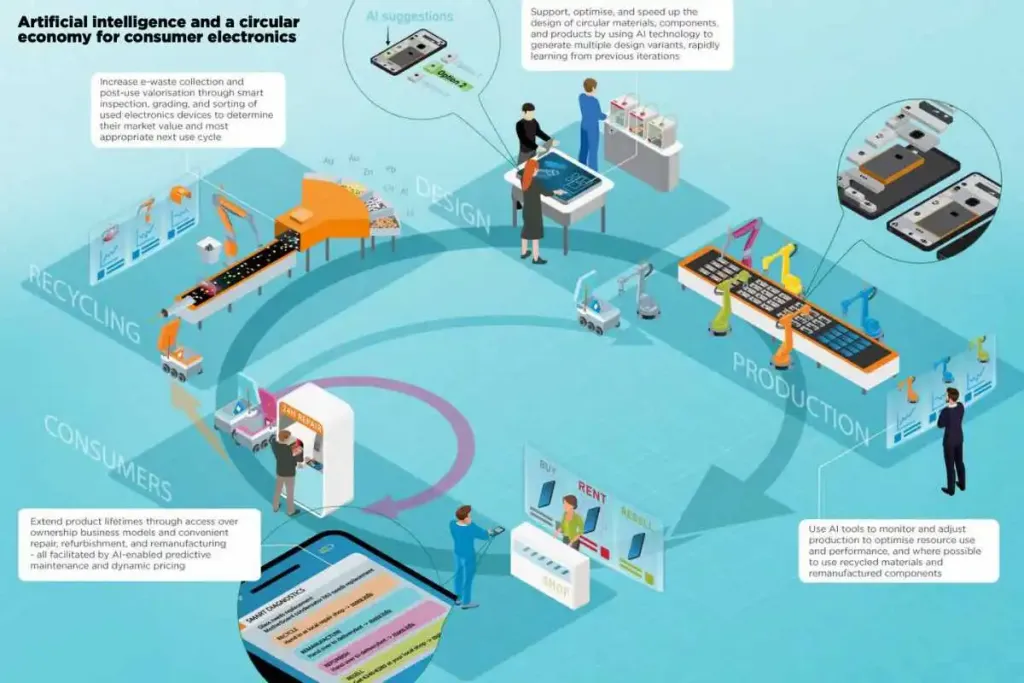
Consumer electronics have become an essential part of our daily lives, affecting the way we work, spend our leisure time, and even the way we communicate and relate to one another.
According to EMF‘s report, 10.5 million tons of consumer e-waste is produced each year (of which 20 percent is recycled), and China is the world’s largest producer of e-waste, with about 6 million tons of products.
In a circular economic future, e-waste will be a concept of the past: electronic devices are designed to be reused, repaired, reconditioned and remanufactured, while all post-use consumer electronics are not disposed of, but circulated among users with different and changing needs, or returned directly to the manufacturer through reverse logistics mechanisms.
AI if implemented properly can help make this sector more circular, contributing to the following aspettIons:
- Increasing the period of use of devices.
- Recover e-waste more efficiently.
- Optimize the use of materials, reducing waste.
- Scaling up research and development (R&D) processes, to speed up innovation.
Refind Technologies case study
Refind Technologies has created systems that can automatically identify and sort batteries or classify and sort cell phones.
The company’s services enable companies to extract the full value from e-waste streams in two ways:
- first, it helps reduce e-waste by improving overall recycling and refurbishment rates;
- second, it increases its value by identifying whether a product’s condition is more suitable for refurbishment or recycling.
Sorting systems, equipped with sensors and cameras, through visual recognition and supervised machine learning technology, can classify the type and condition of e-waste, resulting in safer, faster and higher quality sorting.
AI and Circular Economy in the food sector
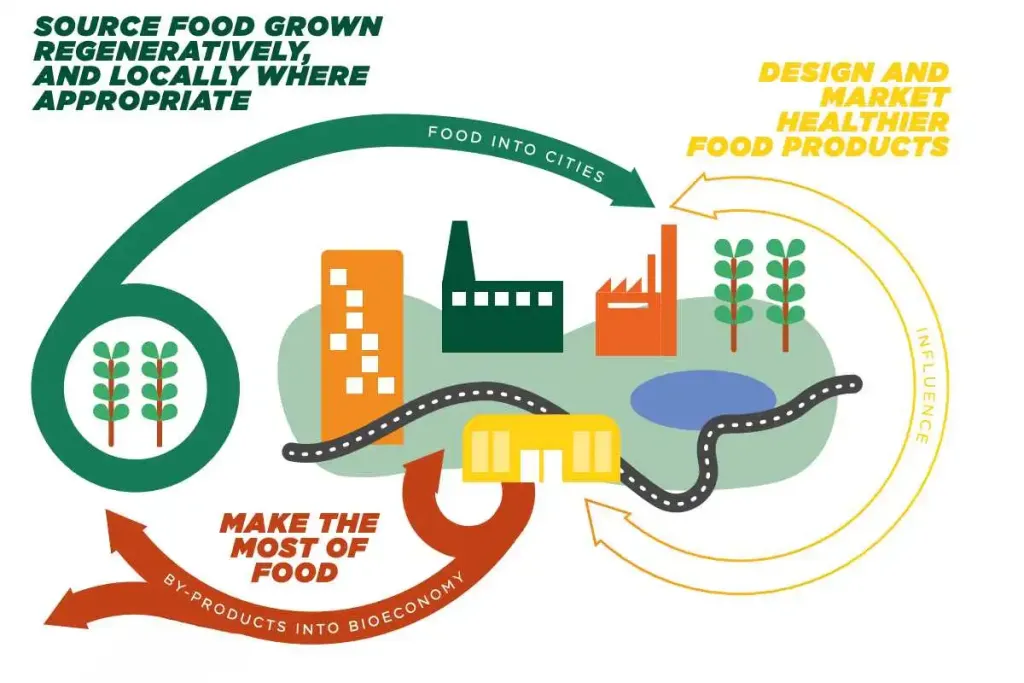
Over the past two centuries, the industrial food system has done wonders to rapidly increase food production on a global scale.
Although the industrial food system has achieved great gains in productivity, it is in essence extractive, wasteful, and unsuitable for meeting the world’s food needs in the long run.
In the vision of a circular food system, food production improves rather than degrades the environment, and people have access to healthy, nutritious and environmentally friendly products.
Technological innovation, including artificial intelligence, plays an important role in realizing this circular vision, generating an economic opportunity that will reach $127 billion by 2030, according to the EMF report.
Digital capabilities support distributed food production and by-product processing. Technologies such as drones, blockchain, AI and other tools making the agricultural sector more sustainable, traceable, transparent and efficient.
Artificial intelligence, if implemented properly, can help achieve a circular food system, bringing numerous benefits within the system, for example:
- Design to eliminate avoidable food waste.
- Make better use of industry by-products.
- Grow regeneratively and locally where appropriate
TOMRA case study
TOMRA is a Norwegian company founded in 1972 that provides a wide range of solutions to increase resource productivity in sorting and harvesting processes.
Specifically for the food industry, it provides equipment for sorting, steaming, and peeling and can provide information on food ripening processes.
The company’s technologies, using sensors and artificial intelligence algorithms, can detect food, helping to redirect good quality products not considered suitable for direct sale to consumers for use in other food products, preventing them from becoming waste.
Challenges and ethical considerations
Artificial intelligence can be an enabler and accelerator of the transition to a circular economy.
The global economic opportunity that artificial intelligence can offer by 2030 has been estimated at US$13 trillion.
However, the potential for pioneering use of this technology in circular economy applications is currently largely untapped.
To make greater use of this potential, we need to start with reflection: understanding where these opportunities lie for different stakeholders and creating the conditions to effectively implement them.
Reflection that will lead us to address three major challenges:
- Creating greater awareness and understanding of how AI will lead to supporting the circular economy, encouraging applications in design, business models, and infrastructure.
- Increasing accessibility and sharing of data will require new approaches and active collaboration among stakeholders.
- Developing AI in a way that is equitable, inclusive, and safeguards the privacy and security of people’s data.
Buy and Sell Industrial Waste

Sfridoo Marketplace helps your company find new partners to maximise the value of your waste, by-products, secondary materials and company stock leftovers.

Simone Tabellini
Digital Marketing Specialist
One of the challenges of the Circular Economy sector, is to be able to clearly and effectively communicate the benefits that this economic model can give companies. By investing in it, we can increase awareness and knowledge in people.

